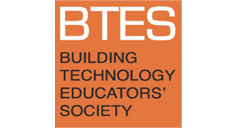Having It Both Ways: Building as Object, Building as Artifact
Abstract
Increasingly (and understandably!) the act of building, along with the buildings we design and build, gain validation through the recognition of the complex systems in which they are conceived, designed, and built. Today, the success of contemporary buildings is determined primarily through their performance, durability, utility, responsiveness to site, context, social responsibility, and interconnectedness to larger, more complex networked ecologies. But these are not the only metrics of a successful project. In the case study design-build program discussed in this paper, it is especially critical that projects also address the learning objectives of the course, contribute to advancing the research agenda of the faculty and program, and of course positively contribute to the needs of the community in which the work is situated. The perceived utility of a built project is contingent on its purpose. Multiple utilities are possible; the constraints of one purpose sometimes provides a platform for an alternative understanding. The research generated on- the-ground at the design-build program is applicable to multiple contexts and provides diverse responses that reveal solutions not conceptualized in the original application. The specific informs the universal and, in turn, the universal provides new understanding of the specific. This feedback loop provides a new measure through which to evaluate the utility of the work: if the project provides multiple solution sets, then it demonstrates the strength of the design response. The authors – who are students, teachers, and critics of the design-build program – examine ways in which prompts enter and exit the studio. Some begin with teaching objectives in mind: the design is an outcome of its teaching process. Others come from a wider field, where a practical need is found to be transferrable into an educational process. This multi-lensed approach allows us to extend the utility of the product beyond the architecture studio and into a broader context. In many ways, designing and building these projects provides a means of illustrating unseen linkages, patterns, and systems. As Heidegger first described in “Being and Time,” it is through utility that a tool, or in this case, a building, disappears as an object, and becomes just a useful bit of equipment, or simply an artifact of production and performance. But often the best, most beautiful buildings are also simultaneously objects that resist utility, and the authors of this paper will attempt to articulate this necessary friction that exists between Building-as-Object and Building-as-Artifact.
Keywords: Architectural Education, Design-Build, Building Performance, Housing
How to Cite:
McGlohn, E., Stagg, M., Garcia, E. F. & Smith, R., (2023) “Having It Both Ways: Building as Object, Building as Artifact”, Building Technology Educators’ Society 2023(1). doi: https://doi.org/10.7275/btes.1972
Downloads:
Download PDF
515 Views
115 Downloads
